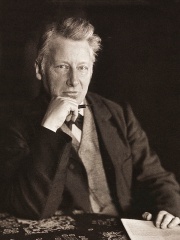
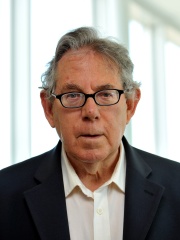
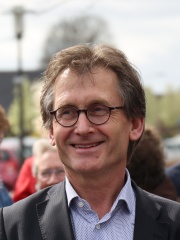
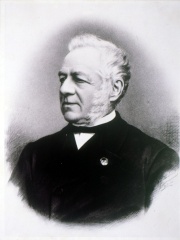
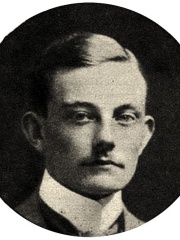
The Most Famous
CHEMISTS from Netherlands
This page contains a list of the greatest Dutch Chemists. The pantheon dataset contains 602 Chemists, 6 of which were born in Netherlands. This makes Netherlands the birth place of the 17th most number of Chemists behind India, and Italy.
Top 6
The following people are considered by Pantheon to be the most legendary Dutch Chemists of all time. This list of famous Dutch Chemists is sorted by HPI (Historical Popularity Index), a metric that aggregates information on a biography's online popularity.

1. Jacobus Henricus van 't Hoff (1852 - 1911)
With an HPI of 80.83, Jacobus Henricus van 't Hoff is the most famous Dutch Chemist. His biography has been translated into 91 different languages on wikipedia.
Jacobus Henricus Van 't Hoff Jr. (Dutch: [vɑn (ə)t ˈɦɔf]; 30 August 1852 – 1 March 1911) was a Dutch physical chemist. A highly influential theoretical chemist of his time, Van 't Hoff was the first winner of the Nobel Prize in Chemistry. His pioneering work helped found the modern theory of chemical affinity, chemical equilibrium, chemical kinetics, and chemical thermodynamics. In his 1874 pamphlet, Van 't Hoff formulated the theory of the tetrahedral carbon atom and laid the foundations of stereochemistry. In 1875, he predicted the correct structures of allenes and cumulenes as well as their axial chirality. He is also widely considered one of the founders of physical chemistry as the discipline is known today.

2. Paul J. Crutzen (1933 - 2021)
With an HPI of 73.45, Paul J. Crutzen is the 2nd most famous Dutch Chemist. His biography has been translated into 62 different languages.
Paul Jozef Crutzen (Dutch pronunciation: [pʌul ˈjoːzəf ˈkrʏtsə(n)]; 3 December 1933 – 28 January 2021) was a Dutch meteorologist and atmospheric chemist. In 1995, he was awarded the Nobel Prize in Chemistry alongside Mario Molina and Frank Sherwood Rowland for their work on atmospheric chemistry and specifically for his efforts in studying the formation and decomposition of atmospheric ozone. In addition to studying the ozone layer and climate change, he popularized the term Anthropocene to describe a proposed new epoch in the Quaternary period when human actions have a drastic effect on the Earth. He was also amongst the first few scientists to introduce the idea of a nuclear winter to describe the potential climatic effects stemming from large-scale atmospheric pollution including smoke from forest fires, industrial exhausts, and other sources like oil fires. He was a member of the Royal Swedish Academy of Sciences and an elected foreign member of the Royal Society in the United Kingdom.

3. Ben Feringa (b. 1951)
With an HPI of 66.64, Ben Feringa is the 3rd most famous Dutch Chemist. His biography has been translated into 55 different languages.
Bernard Lucas "Ben" Feringa (Dutch pronunciation: [ˈbɛrnɑrt ˈlykɑz bɛn ˈfeːrɪŋɣaː]; born 18 May 1951) is a Dutch synthetic organic chemist, specializing in molecular nanotechnology and homogeneous catalysis. He is the Jacobus van 't Hoff Distinguished Professor of Molecular Sciences, at the Stratingh Institute for Chemistry, University of Groningen, Netherlands, and an Academy Professor of the Royal Netherlands Academy of Arts and Sciences. He was awarded the 2016 Nobel Prize in Chemistry, together with Sir J. Fraser Stoddart and Jean-Pierre Sauvage, "for the design and synthesis of molecular machines".

4. C. H. D. Buys Ballot (1817 - 1890)
With an HPI of 63.56, C. H. D. Buys Ballot is the 4th most famous Dutch Chemist. His biography has been translated into 29 different languages.
Christophorus Henricus Diedericus Buys Ballot (Dutch pronunciation: [ˈbœyz bɑˈlɔt]; 10 October 1817 – 3 February 1890) was a Dutch chemist and meteorologist who is the namesake of Buys Ballot's law. He was the first president of the International Meteorological Organization, the organization that would become the World Meteorological Organization.
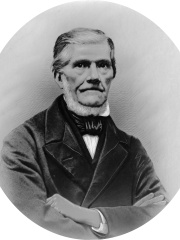
5. Coenraad Johannes van Houten (1801 - 1887)
With an HPI of 59.67, Coenraad Johannes van Houten is the 5th most famous Dutch Chemist. His biography has been translated into 17 different languages.
Coenraad Johannes van Houten (15 March 1801 – 27 May 1887) was a Dutch chemist and chocolate maker known for the treatment of cocoa mass with alkaline salts to remove the bitter taste and make cocoa solids more water-soluble; the resulting product is still called "Dutch process chocolate". He has also been credited with introducing a method for pressing the fat (cocoa butter) from roasted cocoa beans, though this was in fact his father Casparus van Houten's invention.

6. Albert Kluyver (1888 - 1956)
With an HPI of 56.55, Albert Kluyver is the 6th most famous Dutch Chemist. His biography has been translated into 17 different languages.
Albert Jan Kluyver ForMemRS (3 June 1888 – 14 May 1956) was a Dutch microbiologist and biochemist.
People
Pantheon has 6 people classified as Dutch chemists born between 1801 and 1951. Of these 6, 1 (16.67%) of them are still alive today. The most famous living Dutch chemists include Ben Feringa. The most famous deceased Dutch chemists include Jacobus Henricus van 't Hoff, Paul J. Crutzen, and C. H. D. Buys Ballot.
Living Dutch Chemists
Go to all RankingsDeceased Dutch Chemists
Go to all RankingsJacobus Henricus van 't Hoff
1852 - 1911
HPI: 80.83
Paul J. Crutzen
1933 - 2021
HPI: 73.45
C. H. D. Buys Ballot
1817 - 1890
HPI: 63.56
Coenraad Johannes van Houten
1801 - 1887
HPI: 59.67
Albert Kluyver
1888 - 1956
HPI: 56.55
Overlapping Lives
Which Chemists were alive at the same time? This visualization shows the lifespans of the 5 most globally memorable Chemists since 1700.

